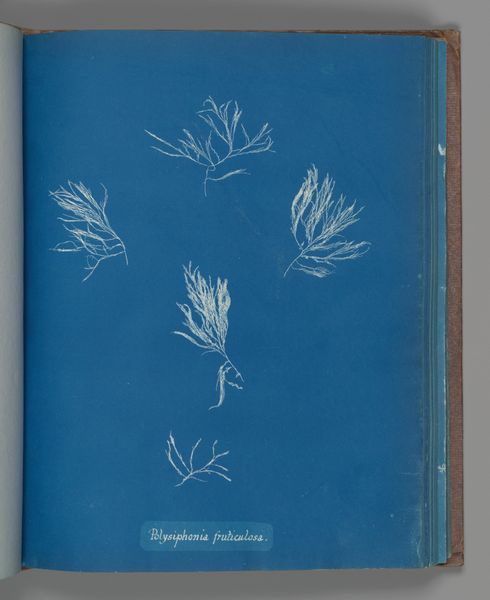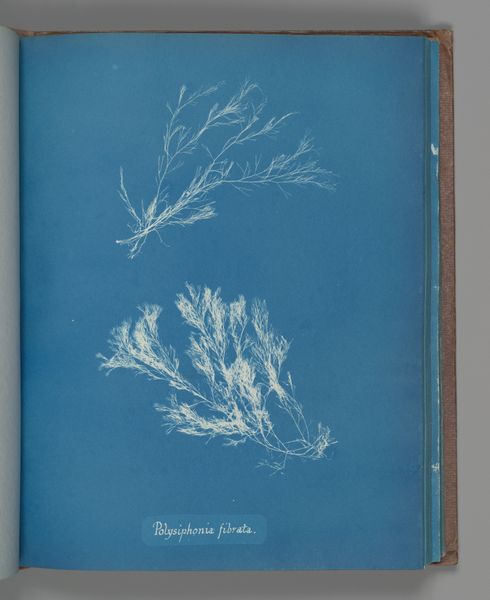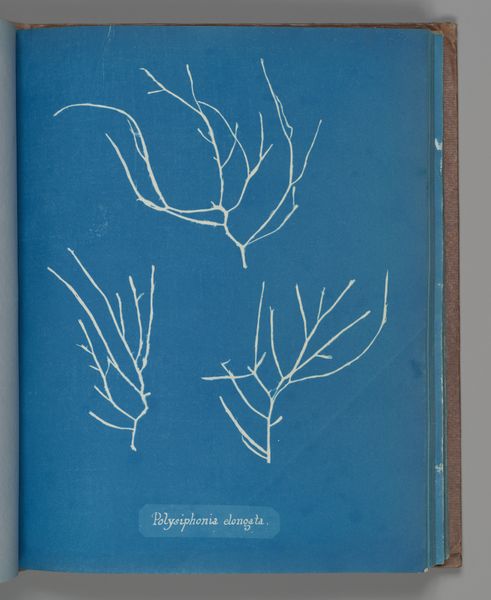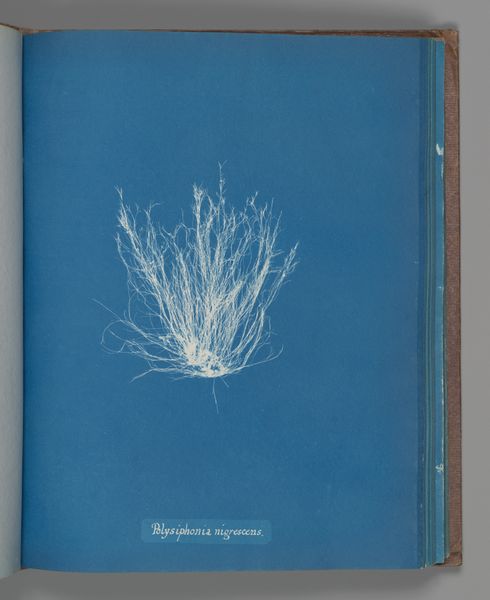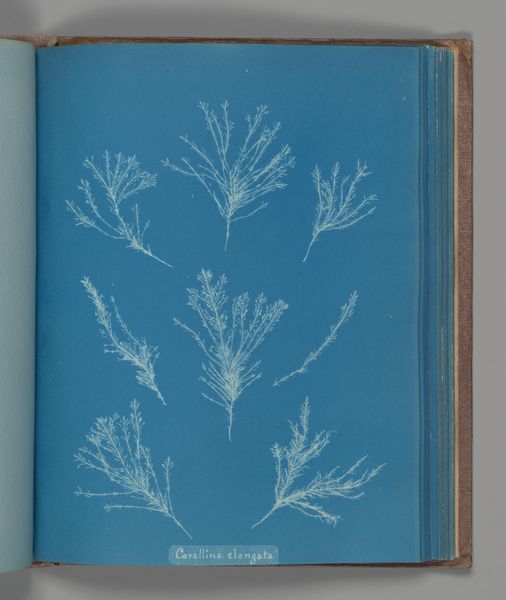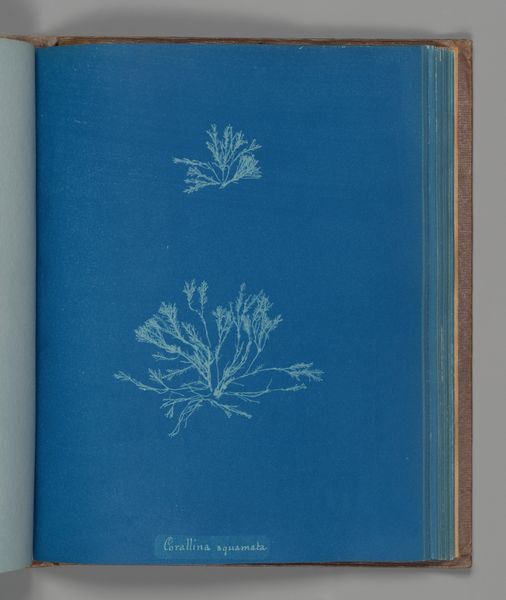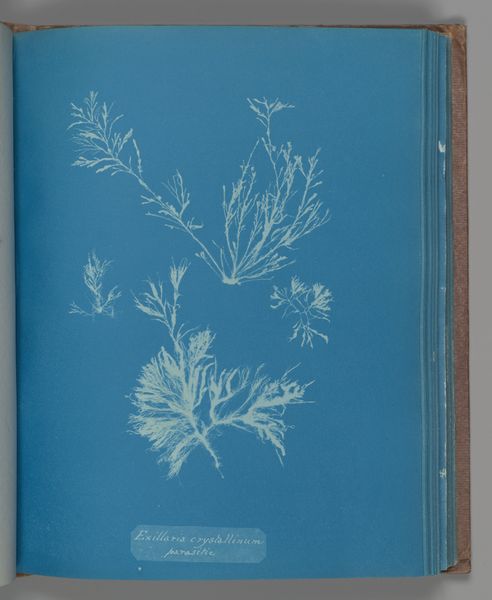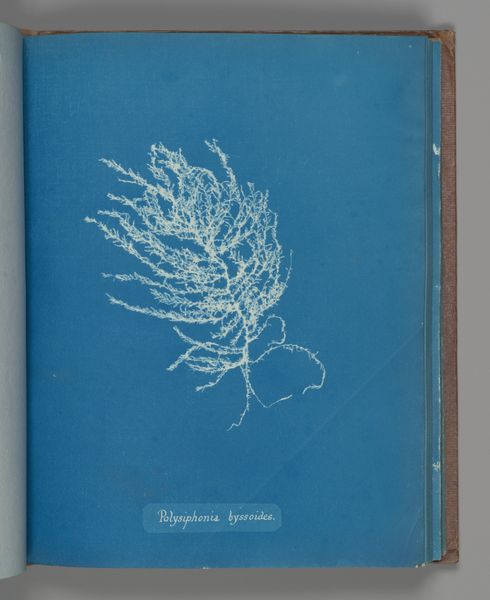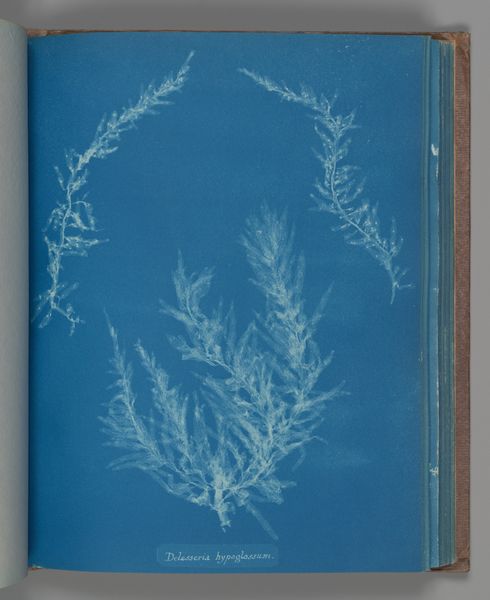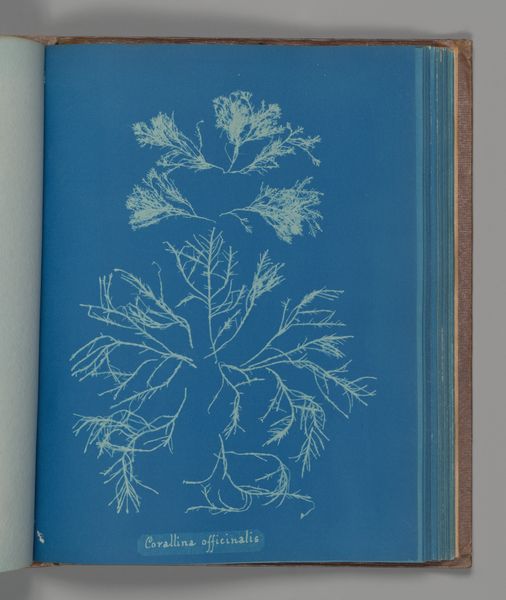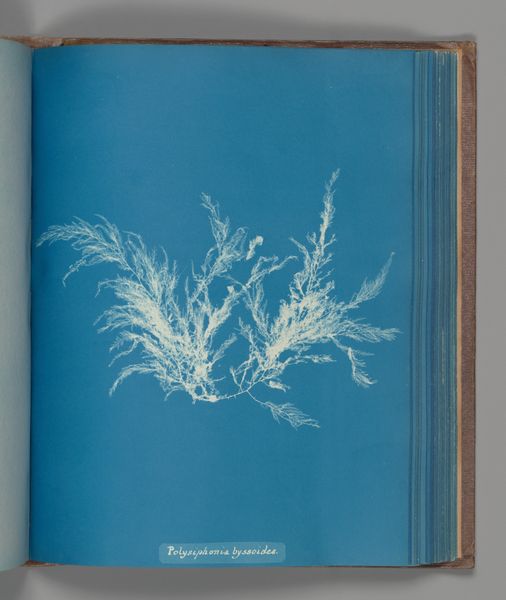
print, paper, cyanotype, photography
#
still-life-photography
# print
#
paper
#
cyanotype
#
photography
#
realism
Dimensions: Image: 25.3 x 20 cm (9 15/16 x 7 7/8 in.)
Copyright: Public Domain
Anna Atkins created this cyanotype of Polysiphonia urceolata, a type of red algae, in the mid-nineteenth century. The plant form, a natural motif, carries with it a rich history. Think of the stylized acanthus leaves adorning classical Corinthian columns, symbols of enduring life and artistic sophistication. Or consider the tree of life motif, a symbol of interconnectedness, and the source of sustenance, echoing across cultures from ancient Mesopotamian art to modern interpretations. Atkins' choice to depict algae connects with this lineage, yet it diverges. The plant takes on a scientific and artistic significance as algae become an emblem of the Victorian era's fascination with natural history. We’re drawn to these natural shapes and the deep subconscious recognition of nature as sustenance and the origin of life, a powerful combination that taps into our deepest emotional and psychological states. Here we have a symbol continuously reappearing throughout history, evolving in meaning yet always rooted in the fundamental connection between nature, life, and our own existence.
Comments
No comments
Be the first to comment and join the conversation on the ultimate creative platform.
